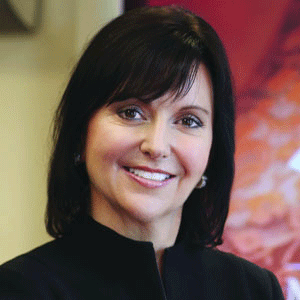THANK YOU FOR SUBSCRIBING

How Travel Brands Can Avoid Social Media Marketing Burnout
Russell Young, Managing Director APAC, Sojern


Russell Young, Managing Director APAC, Sojern
The last few years have witnessed the rapid growth of social media impacting all aspects of how marketers reach and interact with their audiences. In fact, over 3 billion people use social media each month - that’s 42 percent of the total global population, with 9 in 10 of those users accessing their chosen platform via a mobile device. To put this growth into perspective, every second, 11 people use social media for the first time. When added up, that turns into one million new social media users every day!
How Social Media has Influenced Travel?
Social media has undoubtedly permeated its way into the marketing strategies of nearly every business sector and the travel industry is no exception. Travelers now have the privilege of instantaneous access to more information than ever across the web and in the form of social sharing sites such as Instagram and TripAdvisor. In fact, over 97 percent of millennials share photos and videos of their travels online, building an influential web of peer-to-peer content that serves to inspire potential guests.
With the prevalence of social media, Millennials and Generation Z grew up in a more connected world than past generations did. Whilst Facebook holds the highest level of penetration among social media users in 2018 (60.6 percent), Instagram is growing the fastest with global users up by a third, and predicted to increase by 13.1 percent in 2018.
This drive towards social media has been a game changer for travel brands. Brands have had to adapt to utilize these significant platforms and they’ve had to use data to ensure they meet the demand for personalized content in a seamless user experience. The influence of social media on this generation has transformed what it means to be successful in marketing in travel.
Adapt, Adapt, Adapt
Having witnessed such an explosion in social media over the past decade, is it really realistic to expect continued growth or will we hit a point of saturation? Social media usage is on the rise all around the world, but apparently is 58 percent away from saturation. Social media hasn’t maxed out its potential audience, and people will continue converting along with the growth of smartphone ownership and Internet access.
Dynamic content for travel not only means targeting the right people but also displaying dynamic parameters on the ad and directing travelers to customized landing pages
For the next generations, social media will have always been an integral part of their lives. They won’t know a time when you relied on travel guide books for expertise or idle hours spent flicking through travel brochures. The norm will be seeking inspiration from a friend’s Facebook and Instagram posts, securing the best value through price comparison sites, chasing the authentic travel experience from home sharing sites and relying on peer-to-peer testimonials to influence their purchases. Social media has and will continue to be ingrained into the travel world and brands are going to need to be more than just social media friendly; they will need to be socially secure.
Top Tips to Adjust and Adapt:
Focus on Business Objectives
Your social media strategy should focus on your business objectives, whether that is driving bookings or increasing your customer’s lifetime value.
Mobile-First
Nearly 70 percent of APAC’s two billion internet users access the internet via a smartphone making mobile-first the new norm for the region.
Test and Learn
You should constantly be running experiments for each of your objectives to figure out what works for your brand, and then optimizing based on your business objectives. Data science products will help you do this more efficiently.
Automation is a Must
Any brand that is still dealing with operational inefficiencies will not be able to keep up with competition and the constantly evolving ecosystem.
Trail the Trends
Today, you should be focusing on dynamic content. Because travel products, price, and availability are constantly changing, displaying dynamic content is critical for travel advertisers. Dynamic content for travel not only means targeting the right people but also displaying dynamic parameters on the ad and directing travelers to customized landing pages.
Personalise Your Content
An ad that is only an ad is boring and disruptive. But an ad powered by great data and personalized content is something your audience will welcome. These day’s consumers are increasingly expecting and demanding personalized content. As social media becomes more ingrained in consumers lives, they will become less tolerant of adverts that are not tailored to them.
The marketing industry is evolving at a rapid rate and we’re going to see more change in our marketing world in the next two years than in the last 20. Though one thing will remain the same, putting customers first and engaging with them on a personal level on the channels they prefer will always lead to success.











